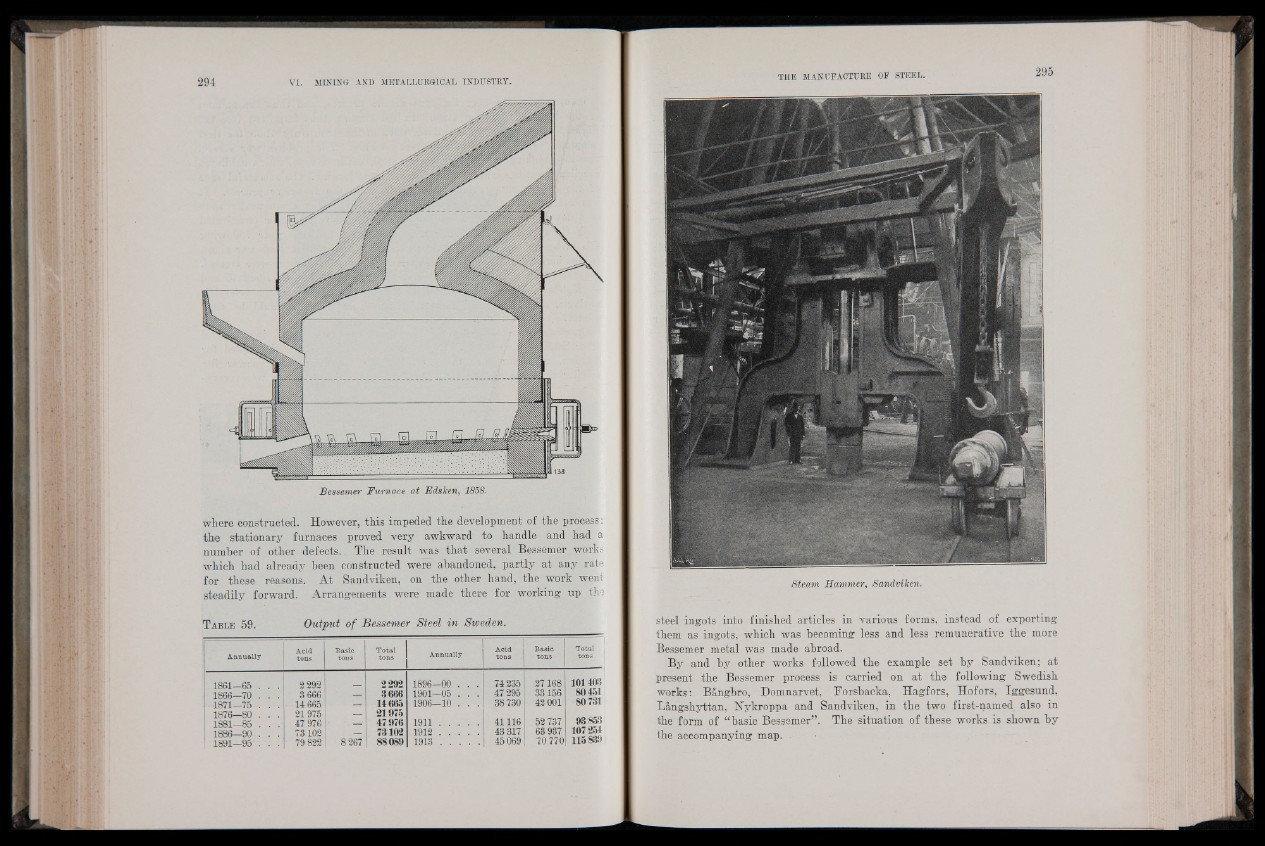
Bessemer Furnace at Edsken, 1858.
where constructed. However, this impeded the development of the process:
the stationary furnaces proved very awkward to handle and had a
number of other defects.. The result was that several Bessemer works
which had already been constructed were abandoned, partly at any rate
for these reasons. At Sandviken, on the other hand, the work went
steadily forward. Arrangements were made there for working up the
T able 59. Output of Bessemer Steel in Sweden.
Annually Acid
tons
Basic
toes
Total
tons Annually Acid
tons
Basic
tons
Total
tons
1861—65 . . . 2292 2292 1896—00 . . . 74 235 27168 101403
1866—70 . . . 3 666 _ 8 666 1901—05 . . 1 47 295 33156 80451
1871—75 . . . 14 665 — 14665 1906—10 . . . 38 730 42 001 80731
1876—80 . . .
21975
— 21975
1881—85 . . .
47 976
47 976 1 9 1 1 ................ 41116 52 737 93 853
1886—90 . . . 73 102 _ 73102 1 9 1 2 ................ 43 317 63 937 107 254
1 1891—95 . . . 79 822 8267 88089 1 9 1 3 ................ 45069 70 770 115 839
Steam Hammer, Sandviken.
steel ingots into finished articles in various forms, instead of exporting
them as ingots, which was becoming less and less remunerative the more
Bessemer metal was made abroad.
By and by other works followed the example set by Sandviken; at
present the Bessemer process is carried on at the following Swedish
works: Bangbro, Domnarvet, Borsbacka, Hagfors, Hofors, Iggesund,
Langshyttan, Nykroppa and Sandviken, in the two first-named also in
the form of “basic Bessemer”. The situation of these works is shown by
the accompanying map.